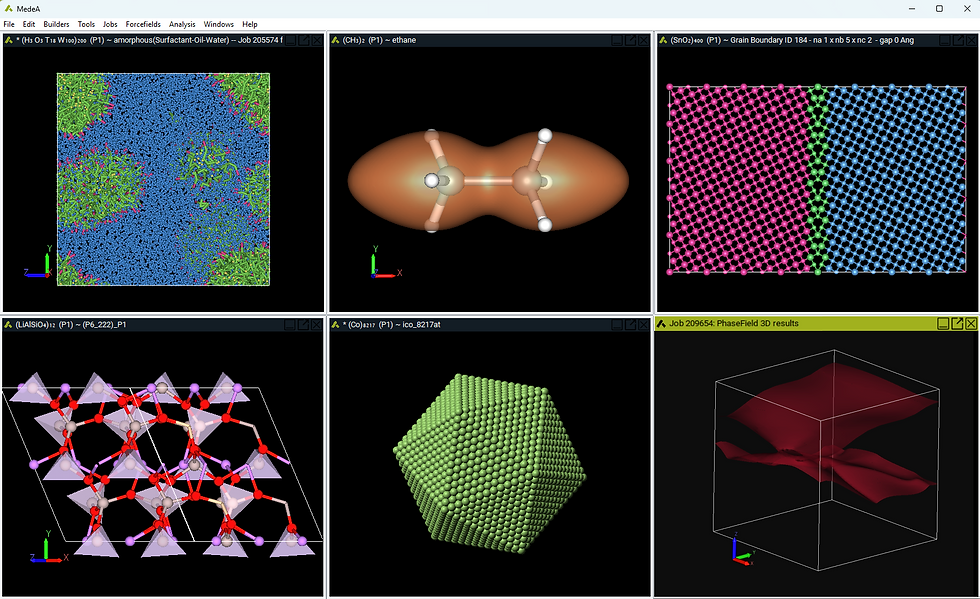Controlling Corrosion
- Katherine Hollingsworth
- Jan 10, 2020
- 2 min read
From the effects of slowly oxidizing steel on infrastructure and pipelines, to hydrogen embrittlement in nuclear reactors and chemical plants, to rust in the automotive industry, corrosion has a tremendous impact on society. In fact, the annual global cost of corrosion has been estimated to be US$2.5 trillion [1].

Hence incremental improvements in the understanding and management of corrosion are of considerable value. Although corrosion processes are complex, they can be monitored and efficiently controlled based on detailed mechanistic insights. Such understanding is provided by first-principles atomistic and electronic structure simulations that directly access the thermodynamics and kinetics of corrosion processes. In addition such methods can provide analytical fingerprints that can be used to monitor key performance indicators.
Recent application examples include: zirconium oxide formation in aqueous environments [2], impurity induced stress corrosion cracking in high performance alloys [3], analysis of corrosion inhibitors for copper [4] and aluminum [5] using density functional theory, and the simulation of solid-liquid electrochemical interfaces [6] (and there are many more).
Materials Design is dedicated to the efficient application of atomistic and electronic structure simulation methods in advancing the understanding of materials properties. Materials Design contributes to industry consortia, scientific, and technical initiatives [see e.g. 7], and it is clear that we are now witnessing substantial advances in the application of simulation based materials understanding to corrosion processes. The illustration above shows the oxide film thickness on the surface of zirconium metal, measured in microns and developed over time periods measured in days, computed using first-principles simulations.
If you would like to learn how the Materials Design MedeA environment is currently employed in corrosion research please contact Materials Design at info@materialsdesign.com.
Hu, Jing, Junliang Lu, Sergio Lozano-Perez, Chris Grovenor, Mikael Christensen, Walter Wolf, Erich Wimmer, and Erik V. Mader. "Hydrogen Pickup During Oxidation in Aqueous Environments: The Role of Nano-Pores and Nano-Pipes in Zirconium Oxide Films." Available at SSRN 3365840 (2019).
Kart, H. H., M. Uludogan, and T. Cagin. "DFT studies of sulfur induced stress corrosion cracking in nickel." Computational Materials Science 44, no. 4 (2009): 1236-1242.
Gattinoni, Chiara, and Angelos Michaelides. "Understanding corrosion inhibition with van der Waals DFT methods: the case of benzotriazole." Faraday discussions 180 (2015): 439-458.
Costa, D., T. Ribeiro, P. Cornette, and P. Marcus. "DFT modeling of corrosion inhibition by organic molecules: carboxylates as inhibitors of aluminum corrosion." The Journal of Physical Chemistry C 120, no. 50 (2016): 28607-28616.
Surendralal, Sudarsan, Mira Todorova, Michael W. Finnis, and Jörg Neugebauer. "First-principles approach to model electrochemical reactions: Understanding the fundamental mechanisms behind Mg corrosion." Physical review letters 120, no. 24 (2018): 246801.
Adamovic, Nadja, Pietro Asinari, Gerhard Goldbeck, Adham Hashibon, Kersti Hermansson, Denka Hristova-Bogaerds, Rudolf Koopmans, Tom Verbrugge, and Erich Wimmer. "European Materials Modelling Council." In Proceedings of the 4th World Congress on Integrated Computational Materials Engineering (ICME 2017), pp. 79-92. Springer, Cham, 2017.



Comments